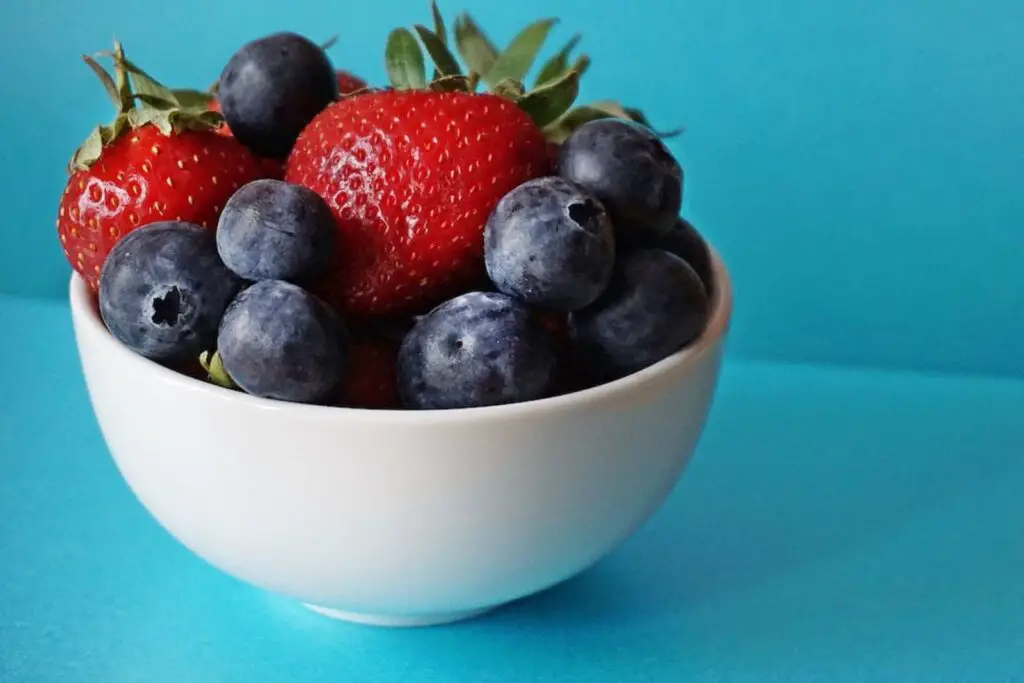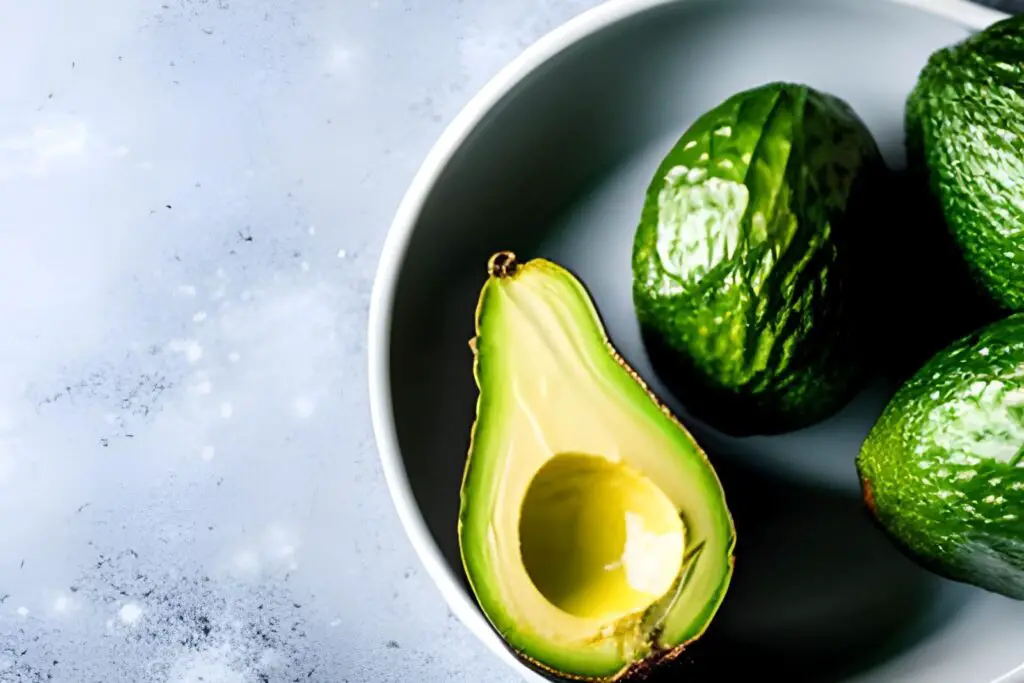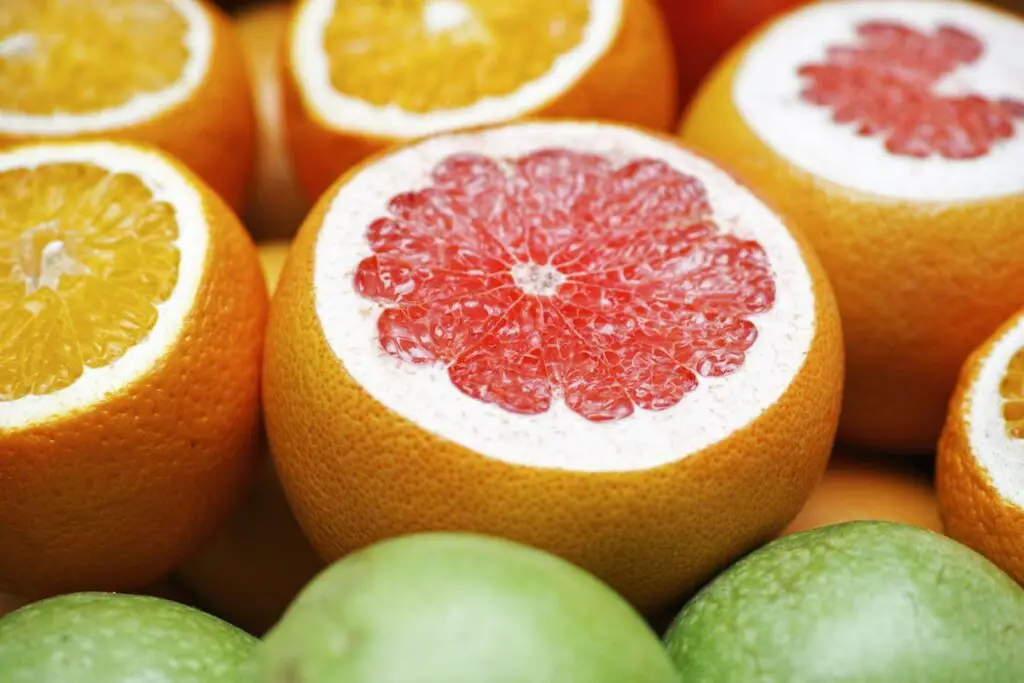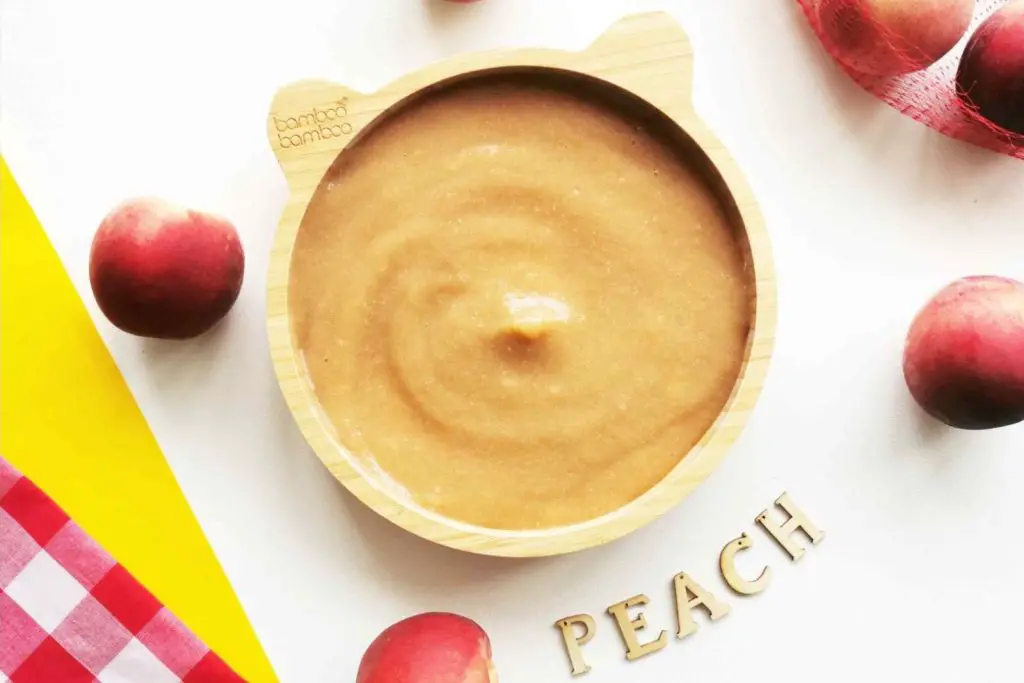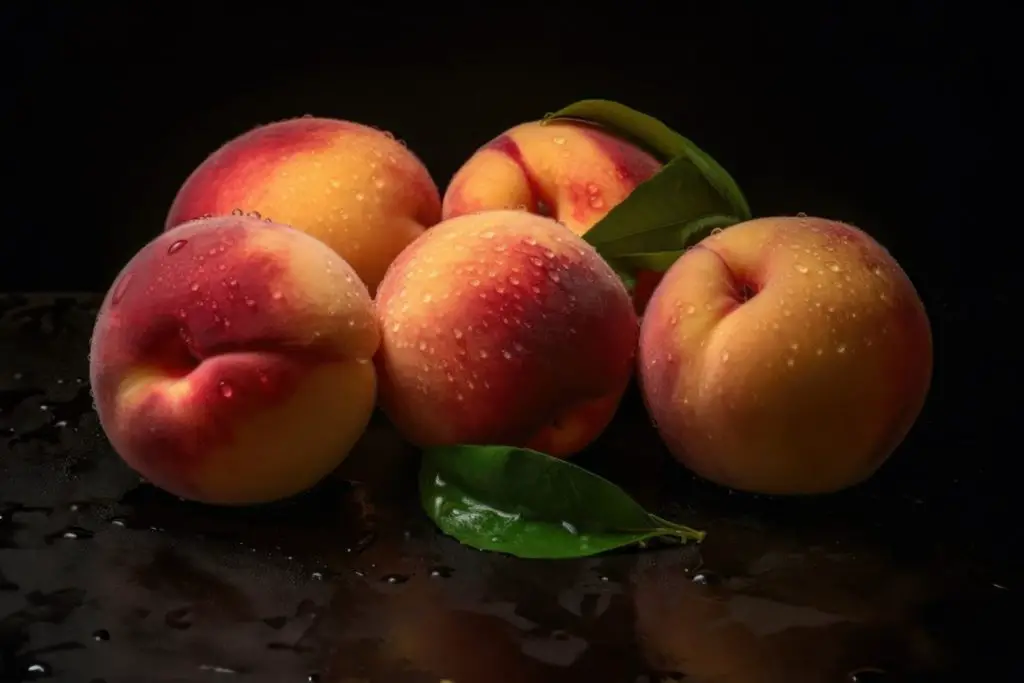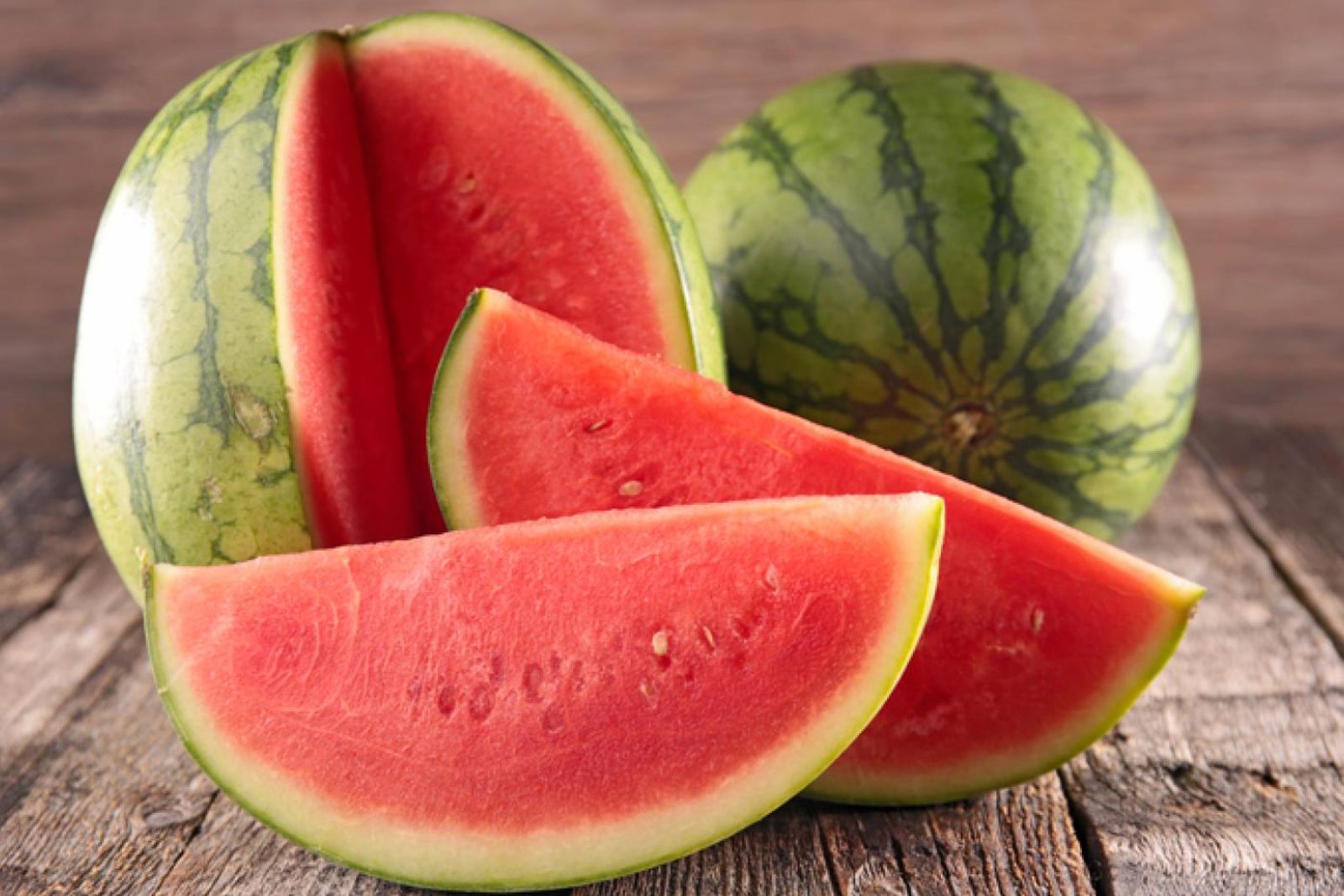
Watermelon is a refreshing and juicy fruit that’s beloved for its sweet and hydrating qualities, especially during hot summer months. Freezing watermelon allows you to enjoy its delightful taste and texture even when it’s not in season. Whether you want to use frozen watermelon in smoothies, sorbets, or as a simple, icy snack, following the right steps will help you preserve its deliciousness. In this article, we’ll provide you with a comprehensive guide on how to freeze watermelon while maintaining its tempting flavor and juicy goodness.
If you’re interested in freezing watermelon, here’s a step-by-step process to follow:
Step 1: Choose a ripe watermelon
When embarking on the process of freezing watermelon, the initial and most crucial step is the careful selection of a ripe and flavorsome fruit. A watermelon’s readiness for freezing is directly linked to its ripeness. To ensure that your frozen watermelon maintains the best possible taste and texture, it’s important to consider a few key factors during the selection process.
- Rind Condition: The exterior of the watermelon, known as the rind, provides valuable clues about its ripeness. Look for a rind that is firm and free from any major blemishes or soft spots. A consistent texture across the rind is a positive indicator of an evenly ripe fruit.
- Weight: Lift the watermelon and assess its weight in relation to its size. Ripe watermelons tend to be heavier than they appear due to their high water content. This weightiness is an indication of juiciness and maturity.
- Color: While the vibrant green color is common, the shade can vary depending on the variety. What’s most important is that the color is uniform and consistent across the watermelon’s surface. Discolorations or variations might suggest uneven ripening.
- Field Spot: The “field spot” is the area of the watermelon that was resting on the ground as it grew. A creamy, yellowish spot is usually a sign of ripeness, while a pale or white field spot might indicate that the fruit was picked prematurely.
- Sound: Give the watermelon a gentle tap. A ripe watermelon typically produces a deep, hollow sound. If the sound is dull or flat, it might indicate underripeness.
- Stem: Check if the stem (or “tail”) is present. A dried-up stem suggests that the watermelon is ripe and detached from the vine. However, the absence of a stem doesn’t necessarily mean the fruit isn’t ripe.
Step 2: Wash and slice the watermelon
After selecting the ideal watermelon, the subsequent step in the process of freezing this delectable fruit involves thorough washing and precise slicing. These steps are pivotal not only for maintaining the cleanliness of the watermelon but also for ensuring uniformity in the frozen pieces. Here’s a breakdown of the process:
- Washing: To begin, gently place the selected watermelon under a stream of cold running water. The purpose of this step is to eliminate any dirt, debris, or potential contaminants that might be present on the surface of the fruit. While the rind acts as a protective layer, a quick wash helps guarantee the cleanliness of the outer skin.
- Cleaning the Surface: While washing, use your hands or a soft brush to gently rub the surface of the watermelon. Pay special attention to any areas that might have accumulated dirt or grime. This step contributes to the overall hygiene of the fruit, reducing the risk of any unwanted particles making their way into the flesh when you slice it.
- Cutting Surface: Once the watermelon is clean, prepare a clean cutting board. This surface should be sanitized to prevent cross-contamination. You can achieve this by washing the cutting board with soap and water, then drying it thoroughly.
- Slicing: With the cleaned watermelon on the cutting board, use a sharp knife to make the first incision. You can choose to slice the watermelon into rounds, crescent-shaped wedges, or convenient cubes, depending on your intended use. The sharpness of the knife is crucial here, as it ensures clean cuts and minimizes any damage to the fruit’s texture.
- Rind Removal: The decision to remove the rind is a matter of personal preference. The rind can provide added texture and visual appeal to the frozen watermelon. If you opt to leave the rind on, make sure it’s clean and free of any remaining dirt. However, if you prefer a smoother texture, you can use the knife to carefully remove the rind before slicing the watermelon into your chosen shape.
- Consistency: While slicing, aim for uniformity in the size of the pieces. This consistency ensures that the watermelon freezes evenly and thaws uniformly when you’re ready to enjoy it.
Can I freeze watermelon cubes instead of slices?
Yes, you can freeze watermelon cubes instead of slices. Just ensure they’re laid out in a single layer during pre-freezing to prevent clumping, and then transfer them to a container.
Step 3: Arrange the watermelon on a tray
As you delve deeper into the process of freezing watermelon, the importance of arranging the slices on a tray becomes evident. This step is pivotal for preserving the individuality of the watermelon pieces and avoiding the undesirable sticking together of frozen slices. Let’s delve into the details:
- Preventing Clumping: Once you’ve sliced the watermelon into your desired shapes, it’s time to arrange the pieces on a flat surface, such as a baking sheet or a tray. The goal here is to ensure that the individual slices do not come into contact with one another during the freezing process. If the watermelon pieces freeze while touching, they can easily fuse together, resulting in an inconvenient clump that’s challenging to separate later.
- Flat Surface: Choose a clean and spacious tray or baking sheet that can accommodate all the watermelon slices without crowding them. This provides ample space for air circulation around each piece, promoting even freezing and preventing sticking.
- Single Layer: Lay out the watermelon slices in a single layer on the tray. Avoid stacking the slices on top of each other, as this can lead to uneven freezing and potentially cause the slices to freeze together.
- Space Between Slices: Ensure that there is a small gap between each watermelon slice. This space allows for the expansion that occurs as the watermelon freezes. The formation of ice crystals can cause slight expansion, and leaving room between the slices prevents them from becoming tightly bonded.
- Enhanced Freezing Quality: By arranging the slices individually and with adequate space, you enhance the quality of the frozen watermelon. Each slice will freeze quickly and uniformly, preserving its texture and taste. Moreover, the prevention of clumping ensures that you can easily access the desired quantity of frozen watermelon without the need to thaw and separate fused pieces.
- Transfer to Packaging: After the watermelon slices have undergone a brief initial freezing on the tray, you can transfer them to a freezer-safe container or resealable plastic bag for long-term storage. The pre-freezing on the tray helps maintain the individuality of the slices, even when they’re stored together in a container.
Step 4: Pre-freeze the watermelon slices
The pre-freezing phase is a critical step in the process of freezing watermelon that contributes significantly to the quality and convenience of the final frozen product. This step involves placing the arranged watermelon slices on a tray in the freezer for a designated period of time. Let’s explore the rationale behind this important pre-freezing step:
- Individualizing Slices: As watermelon slices freeze, ice crystals form within their cells. This can lead to a phenomenon known as “clumping,” where the slices stick together due to the interlocking ice crystals. Pre-freezing the watermelon slices individually on a tray allows each slice to solidify on its own before they are stored together in a container. This individualization prevents the slices from fusing and clumping together in a way that would make them difficult to separate later.
- Quick Freezing: Placing the watermelon slices in the freezer on a tray facilitates rapid freezing. Quick freezing is essential because it results in smaller ice crystals. Larger ice crystals formed during slow freezing can rupture the cell walls of the fruit, compromising its texture and juiciness upon thawing. By pre-freezing the slices on a tray, you ensure that they freeze quickly and maintain their cellular structure.
- Temperature Equilibrium: During the pre-freezing process, the watermelon slices come into contact with the cold air in the freezer. This allows any remaining moisture on the surface of the slices to freeze rapidly, creating a protective layer that prevents excessive moisture loss and freezer burn during long-term storage.
- Convenient Packaging: After the watermelon slices have been pre-frozen, they can be more easily transferred to a freezer-safe container or resealable bag. Since the slices are already individually frozen and separate, they won’t stick together when placed in the storage container. This convenience ensures that you can access the desired quantity of frozen watermelon without needing to thaw and break apart clumps.
- Texture Preservation: The pre-freezing step contributes to preserving the natural texture of the watermelon. Each slice retains its shape, juiciness, and appealing bite. This is particularly important if you plan to use the frozen watermelon in recipes where texture matters, such as sorbets, smoothies, or fruit salads.
Step 5: Transfer to a freezer-safe container
After the pre-freezing process, the next crucial step in freezing watermelon involves carefully transferring the pre-frozen slices to an appropriate storage container. This container should be capable of withstanding freezing temperatures without affecting the quality of the fruit. Let’s delve into the reasons and methods behind this step:
- Freezer-Safe Container: Choose a container that is specifically designed to be safe for freezing. These containers are made from materials that can withstand the low temperatures of the freezer without becoming brittle or breaking. Containers labeled as “freezer-safe” or “food storage for freezing” are suitable options.
- Protection from Freezer Burn: Freezer burn is a common issue that occurs when frozen foods are exposed to air and moisture. It leads to the deterioration of texture and flavor. Transferring the pre-frozen watermelon slices to a well-sealed container minimizes their exposure to air, reducing the risk of freezer burn and helping the slices retain their quality over time.
- Air Removal: If you’re using a resealable plastic bag, take extra care to remove as much air as possible from the bag before sealing it. Excess air in the bag can cause freezer burn by creating pockets of moisture and ice crystals. You can use the “straw method” to remove air by inserting a straw into the bag, sealing it as close to the opening as possible, and then sucking out the air before quickly sealing the bag.
- Individual Portioning: If you’re freezing watermelon for individual servings, consider portioning the slices before sealing them in the container. This way, you can easily grab the desired amount without thawing the entire batch.
- Container Size: Opt for an appropriately sized container or bag. Avoid overloading the container, as this can lead to compression of the watermelon slices, potentially affecting their texture. Leave some space at the top to account for any expansion that might occur as the watermelon continues to freeze.
Step 6: Label and date the container
As you embark on the journey of freezing watermelon, one often overlooked yet incredibly important step is the labeling and dating of the storage container. This seemingly simple task holds significant benefits in terms of organization, food safety, and maintaining the overall quality of your frozen watermelon. Here’s why it matters and how to do it right:
- Tracking Storage Duration: Frozen foods, including watermelon, don’t remain in perfect condition indefinitely. Over time, even when stored properly, some changes in texture and flavor might occur. By labeling the container with the date you placed the watermelon in the freezer, you create a reference point. This allows you to keep track of how long the frozen watermelon has been stored. As a general guideline, most frozen fruits maintain their best quality for around 8 to 12 months in a standard home freezer.
- Preventing Food Waste: Keeping track of the storage duration helps you avoid unnecessary food waste. If you forget when you froze the watermelon, you might end up keeping it for too long and eventually having to discard it due to quality degradation. Labeling ensures that you’re aware of how long the frozen watermelon has been in your freezer and helps you make informed decisions about consumption.
- Rotation of Inventory: If you freeze various foods regularly, having labeled and dated containers creates an organized system for rotating your freezer inventory. This means you’ll use the oldest items first, minimizing the chances of forgotten foods getting lost in the back of the freezer.
- Better Planning: Knowing the freezing date allows you to plan your consumption. For instance, if you have a batch of frozen watermelon that’s been in the freezer for several months, you might prioritize using it up before freezing a new batch to ensure optimal quality.
- Quality Assurance: The labeling and dating process aligns with food safety principles. By practicing proper labeling, you demonstrate your commitment to safe and well-managed food storage, which is particularly important for items stored over longer periods.
- How to Label: To label the container or bag, use a marker or label sticker. Write down the date of freezing clearly and legibly. If you also want to specify what’s in the container (e.g., “Watermelon Slices”), you can do so for easy identification.
- Placement: Place the label in a visible area on the container or bag so that it’s easy to read without having to move things around in the freezer.
Step 7: Store in the freezer
After carefully preparing and packaging your frozen watermelon slices, the time has come to place them in the freezer for safekeeping. However, there are a few considerations to keep in mind to ensure that your efforts to freeze watermelon result in long-lasting, high-quality slices ready for your enjoyment. Let’s delve into the details:
- Ideal Freezing Conditions: The freezer is your ally in preserving the freshness and taste of your frozen watermelon. It’s important to ensure that the freezer maintains a temperature of 0°F (-18°C) or below. This temperature range ensures that the watermelon remains in a frozen state, preventing any potential microbial growth or loss of quality.
- Placement Matters: When storing your labeled and dated container of frozen watermelon slices, be mindful of where you position it in the freezer. Avoid placing the container where it might get crushed or damaged by other items. Ideally, choose a location where the container can remain undisturbed until you’re ready to use the frozen watermelon.
- Airflow and Accessibility: Ensure that there is adequate airflow around the container. This allows the freezer to maintain a consistent temperature and promotes even freezing. Additionally, placing the container in a location that’s easily accessible ensures that you can retrieve the frozen watermelon without having to move other items around.
- Freezer Organization: If you have multiple frozen items, creating an organized system can help you keep track of your inventory and easily locate what you need. Group similar items together and consider using bins or baskets to categorize different types of frozen foods.
- Storage Duration: Frozen watermelon slices, when stored under optimal conditions, typically maintain their best quality for about 8 to 12 months. Beyond this timeframe, the slices might still be safe to consume, but there could be some loss in texture and flavor. It’s always a good practice to rotate your freezer inventory, using older items before introducing new ones.
- Minimizing Fluctuations: Avoid frequent fluctuations in freezer temperature by keeping the freezer door closed as much as possible. Temperature fluctuations can lead to the formation of ice crystals and affect the overall quality of frozen foods.
- Label Visibility: Once the container is in the freezer, ensure that the label with the date is still visible. This helps you quickly identify how long the watermelon slices have been stored without having to open the container.
Step 8: Thaw and enjoy
The culmination of your efforts to freeze watermelon arrives when you’re ready to savor the sweet, refreshing taste of this delightful fruit. However, the process of thawing frozen watermelon requires a bit of patience and care to ensure that the quality remains intact. Here’s how to proceed and what to expect:
- Gentle Thawing: When it’s time to enjoy your frozen watermelon, start by removing the desired amount from the freezer. Avoid attempting to speed up the process by using methods like microwaving, as this can lead to uneven thawing and undesirable changes in texture.
- Refrigerator Thawing: The safest and most effective method for thawing frozen watermelon is to place it in the refrigerator. This gradual thawing process prevents abrupt changes in temperature that can compromise the quality of the fruit. Place the container of frozen watermelon slices in the refrigerator and allow them to thaw slowly over several hours or overnight.
- Texture Changes: It’s important to note that freezing can slightly alter the texture of watermelon slices. Freezing causes the water content in the cells to expand, leading to a softer texture upon thawing. While the texture might not be exactly the same as fresh watermelon, the delicious flavor and juiciness will still be present.
- Uses and Recipes: Thawed watermelon slices are versatile and can be used in various ways. They are perfect for making smoothies, sorbets, fruit salads, and other frozen treats. The slightly softer texture can actually be an advantage in some recipes, as it blends well and adds a burst of flavor.
- Enjoyment: Once the watermelon slices are fully thawed, they’re ready to be enjoyed. Whether you’re indulging in a refreshing snack, creating a delightful dessert, or incorporating them into your culinary creations, you can relish the sweet taste and juiciness that frozen watermelon offers.
- Quick Consumption: It’s best to consume the thawed watermelon slices within a few days after thawing. This ensures that you experience the best possible flavor and texture. Avoid refreezing the thawed slices, as this can further alter their texture and compromise their quality.
Other related questions
Can I refreeze watermelon?
Refreezing watermelon is not recommended due to changes in texture and quality. Once thawed, watermelon’s cellular structure alters, affecting taste and juiciness. Consume thawed watermelon promptly for optimal enjoyment.
How do I know if the watermelon has gone bad after being frozen?
Check for signs like freezer burn, color change, and mushiness. Freezer-burned watermelon appears dry and discolored, affecting taste. If the texture turns mushy or watery after thawing, it may have degraded.
Can I use frozen watermelon in smoothies or cocktails?
Absolutely! Frozen watermelon works wonderfully in smoothies, cocktails, and mocktails, adding a refreshing burst of flavor and a slushy texture to your beverages.
Can I use frozen watermelon for fruit salads?
Certainly! Thawed frozen watermelon slices can be used in fruit salads. Their slightly softer texture can even blend well with other fruits.
Is there a difference in freezing red, yellow, and seedless watermelons?
All watermelon varieties freeze similarly. Consider personal preferences for taste and texture when selecting the type to freeze. Freezing maintains core characteristics but slight variations may occur due to inherent differences.
Can I freeze watermelon slices with other fruits?
Yes, freezing watermelon slices with other fruits is possible. However, ensure flavors and textures complement each other for optimal results. Combining compatible fruits can create delightful frozen blends for various culinary applications.

